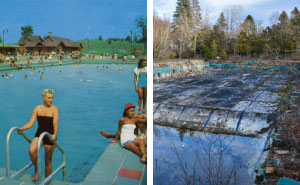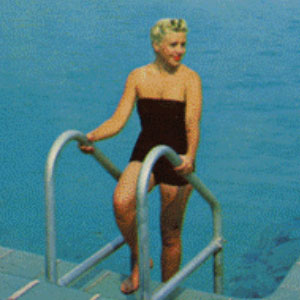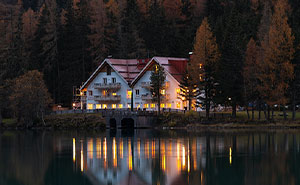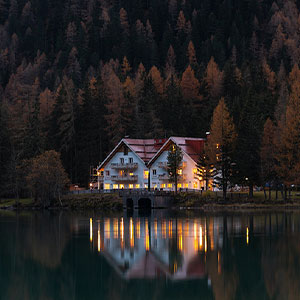There's this weird correlation between LEGOs and life stages. If, at first, your only interest is to chew the blocks and smash them into one another, then later you actually start to build something out of them. After a while, your LEGO bricks are probably thrown into a dark corner of a closet, with only a few sneaky pieces left lying around for you to step on and swear loudly. Some years pass, and you suddenly remember your long-forgotten LEGO bricks, pull them out of the closet and start playing around, right when you thought you're fully grown-up and toys are not for you anymore. These people, though, took their revived love for LEGO creations a step further and re-did classical art pieces accurately only by using LEGOs.
By saying classical art and famous paintings we really are talking about the artworks of the greatest masters and not some doodles from when you were three. Not only is there the Great Wave Off Kanagawa and American Gothic, but also famous works of Gustav Klimt and even a life-size recreation of Michelangelo's David. The creation of which must've taken as much time as making the original statue. The dedication of it! Anyway, this mash-up of everyone's favorite building blocks and unique art is undoubtedly a hit.
Now, if we managed to arouse your curiosity and grab your attention, scroll down below and check these amazing LEGO builds for yourself. Don't forget to comment and vote for the most elaborate one!
This post may include affiliate links.
Leonardo Da Vinci's Mona Lisa
The Mona Lisa is a half-length portrait painting by the Italian Renaissance artist Leonardo da Vinci that has been described as "the best known, the most visited, the most written about, the most sung about, the most parodied work of art in the world." Mona Lisa is also one of the most valuable paintings in the world. It holds the Guinness World Record for the highest known insurance evaluation in history
Maurits Cornelis Escher's Relativity
Relativity is a lithograph print by the Dutch artist M. C. Escher, first printed in December 1953. The first version of this work was a woodcut earlier that same year. It depicts a world in which the normal laws of gravity do not apply. The architectural structure seems to be the center of an idyllic community, with most of its inhabitants casually going about their ordinary business, such as dining. Windows and doorways are leading to park-like outdoor settings. All of the figures are dressed in identical attire and have featureless bulb-shaped heads. Identical characters such as these can be found in many other Escher works. This is one of Escher’s most famous works and has been used in a variety of ways
Hokusai's Great Wave Off Kanagawa
The Great Wave off Kanagawa, also known as The Great Wave or simply The Wave, is a woodblock print by the Japanese artist Hokusai. It was published sometime between 1829 and 1833 in the late Edo period as the first print in Hokusai's series Thirty-six Views of Mount Fuji. It is Hokusai's most famous work, and one of the most recognizable works of Japanese art in the world
Gustav Klimt's The Kiss
The Kiss is an oil painting, with added silver and gold leaf by the Austrian symbolist painter Gustav Klimt, and was painted between 1907 and 1908 during the height of Klimt's "Golden Period." The painting depicts a couple embracing one another. The painting is considered as Klimt's most famous work
Edvard Munch's The Scream
The Scream is the popular name given to a composition created by Norwegian expressionist artist Edvard Munch in 1893. The original German title given by Munch to his work was Der Schrei der Natur (The Scream of Nature). The agonized face in the painting has become one of the most iconic images of art, seen as symbolizing the anxiety of modern man. Munch recalled that he had been out for a walk at sunset when suddenly the setting sunlight turned the clouds "a blood red." He sensed an ‘infinite scream passing through nature'
I never realised that the original title was ‘The Scream of Nature’ ; that seems particularly appropriate right now.
Exekias' The Vatican Amphora
The Vatican amphora depicts Achilles and Ajax playing a board game, with both men identified by their names added in the genitive. Ajax and Achilles sit across from each other, looking down at a block situated between them. The board game they are playing, which might be compared to a backgammon or checkers variant, was played with a die. According to the words written next to the two players, Achilles proclaims he has thrown a four, while Ajax has a three. Although the two of them are pictured playing, they are clearly depicted as being on duty, accompanied by their body armor and holding their spears, suggesting that they might head back into battle at any moment. Apart from the selection of this very intimate, seemingly relaxed scene as a symbol for the Trojan War, this vase-painting also showcases the talent of Exekias as an artist: the figures of both Achilles and Ajax are decorated with finely incised details, showing elaborate textile patterns and almost every hair in place. No existing literary source is known to have circulated in the sixth century BC in Athens regarding a narrative involving Ajax and Achilles playing a board game
Michelangelo's David
David is a masterpiece of Renaissance sculpture created in marble between 1501 and 1504 by the Italian artist Michelangelo. David is a 5.17-meter (17.0 ft) marble statue of the Biblical hero David, a favored subject in the art of Florence
Pink Floyd Dark Side Of The Moon Album's Cover Designed By George Hardie
The Dark Side of the Moon is the eighth studio album by English rock band Pink Floyd, released on 1 March 1973. The record was initially published in a gatefold LP sleeve designed by Hipgnosis and George Hardie. The design was inspired by a photograph of a prism with a color beam projected through it that Thorgerson had found in a photography book. The final design depicts a glass prism dispersing light into color. The picture represents three elements: the band's stage lighting, the album lyrics, and Wright's request for a "simple and bold" design
Andy Warhol's Campbell's Soup Can
Campbell's Soup Cans is a work of art produced between November 1961 and March or April 1962 by Andy Warhol. It consists of thirty-two canvases, measuring 20 inches (51 cm) in height × 16 inches (41 cm) in width, showcasing a Campbell's Soup can - one of each of the canned soup varieties the company offered at the time. The individual paintings were produced by a particular printmaking method - a semi-mechanized screen printing process, using a non-painterly style. Campbell's Soup Cans' reliance on themes from popular culture helped to usher in pop art as a significant movement in the United States
Leonardo Da Vinci's The Last Supper
The Last Supper is a late 15th-century mural painting by Italian artist Leonardo da Vinci housed by the refectory of the Convent of Santa Maria Delle Grazie in Milan, Italy. It is one of the western world's most recognizable paintings. The artwork represents a scene from the Last Supper of Jesus with his apostles. Leonardo had depicted the consternation that occurred among the Twelve Apostles when Jesus announced that one of them would betray him
Johannes Vermeer's Girl With A Pearl Earring
The painting Girl with a Pearl Earring is one of Dutch painter Johannes Vermeer's masterworks and, as the name implies, uses a pearl earring for a focal point. Today the painting is kept in the Mauritshuis gallery in The Hague. It is sometimes referred to as "the Mona Lisa of the North" or "the Dutch Mona Lisa"
Augustus Of Prima Porta
Augustus of Prima Porta is a 2.03 m high marble statue of Augustus Caesar, the first and one of the most significant emperors of Ancient Rome, which was discovered on April 20, 1863, in the Villa of Livia at Prima Porta, near Rome. Augustus Caesar's wife Livia Drusilla, now known as Julia Augusta, retired to the villa after his death. The sculpture is now displayed in the Braccio Nuovo of the Vatican Museums
Venus De Milo
The Aphrodite of Milos, generally known as the Venus de Milo, is an ancient Greek statue and one of the most famous works of ancient Greek sculpture. Initially, it was attributed to the sculptor Praxiteles, however, from an inscription that was on its plinth, the statue is thought to be the work of Alexandros of Antioch. Created sometime between 130 and 100 BC, the statue is believed to depict Aphrodite, the Greek goddess of love and beauty; however, some scholars claim it is the sea-goddess Amphitrite, venerated on Milos. It is a marble sculpture, slightly larger than life-size at 203 cm (6 ft 8 in) high. Part of an arm and the original plinth were lost following its discovery
Grant Wood's American Gothic
American Gothic is a 1930 painting by Grant Wood in the collection of the Art Institute of Chicago. Wood was inspired to paint what is now known as the American Gothic House in Eldon, Iowa, along with "the kind of people I fancied should live in that house." It depicts a farmer standing beside a woman who has been interpreted to be his sister
Vincent Van Gogh's Starry Night
The Starry Night is an oil on canvas by the Dutch post-impressionist painter Vincent van Gogh. Painted in June 1889, it depicts the view from the east-facing window of his asylum room at Saint-Rémy-de-Provence, just before sunrise, with the addition of an idealized village. Starry Night is one of the most recognized paintings in the history of Western culture. Despite the large number of letters Van Gogh wrote, he said very little about The Starry Night. In a letter to painter Émile Bernard from late November 1889, Van Gogh referred to the painting as a "failure."
Thutmose's Nefertiti Bust
The Nefertiti Bust is a painted stucco-coated limestone bust of Nefertiti, the Great Royal Wife of the Egyptian Pharaoh Akhenaten. The work is believed to have been crafted in 1345 B.C. by the sculptor Thutmose, because it was found in his workshop in Amarna, Egypt. Owing to the work, Nefertiti has become one of the most famous women of the ancient world, and an icon of feminine beauty
Michelangelo's The Creation Of Adam
The Creation of Adam is a fresco painting by an Italian artist Michelangelo, which forms part of the Sistine Chapel's ceiling, painted c. 1508–1512. It illustrates the Biblical creation narrative from the Book of Genesis in which God gives life to Adam, the first man. The fresco is part of an elaborate iconographic scheme and is chronologically the fourth in the series of panels depicting episodes from Genesis. The image of the near-touching hands of God and Adam has become iconic for humanity. Michelangelo's Creation of Adam is one of the most replicated religious paintings of all time
Georges Seurat's Sunday Afternoon On The Island Of La Grande Jatte
A Sunday Afternoon on the Island of La Grande Jatte painted in 1884, is Georges Seurat's most famous work. It is a leading example of the pointillist technique, executed on a large canvas. Seurat's composition includes a number of Parisians at a park on the banks of the River Seine
Eugène Delacroix's Liberty Leading The People
Liberty Leading the People is a painting by Eugène Delacroix commemorating the July Revolution of 1830, which toppled King Charles The Tenth of France. A woman of the people with a Phrygian cap personifying the concept of Liberty leads the crowd forward over a barricade and the bodies of the fallen, holding the flag of the French Revolution – the tricolour, which again became France's national flag after these events – in one hand and brandishing a bayonetted musket with the other. The figure of Liberty is also viewed as a symbol of France and the French Republic known as Marianne
Sandro Botticelli's Birth Of Venus
The Birth of Venus is a painting by the Italian artist Sandro Botticelli probably made in the mid-1480s. It depicts the goddess Venus arriving at the shore after her birth when she had emerged from the sea fully-grown
Why do the female Lego pieces look so menacing? Are they from some set of Viking warrior goddesses or what?
Pierre-Auguste Renoir's The Luncheon Of The Boating Party
Luncheon of the Boating Party is a painting by French impressionist Pierre-Auguste Renoir. Included in the Seventh Impressionist Exhibition in 1882, it was identified as the best painting in the show by three critics. It was purchased from the artist by the dealer-patron Paul Durand-Ruel and bought in 1923 (for $125,000) from his son by industrialist Duncan Phillips, who spent a decade in pursuit of the work. It shows a richness of form, a fluidity of brush stroke, and a flickering light
Mount Rushmore National Memorial
Mount Rushmore National Memorial is centered around a sculpture carved into the granite face of Mount Rushmore in the Black Hills in Keystone, South Dakota. Sculptor Gutzon Borglum created the sculpture's design and oversaw the project's execution from 1927 to 1941 with the help of his son Lincoln Borglum. The statue features the 60-foot (18 m) heads of Presidents George Washington, Thomas Jefferson, Theodore Roosevelt, and Abraham Lincoln. The four presidents were chosen, respectively, to represent the birth, the growth, the development, and the preservation of the United States
Auguste Rodin's The Thinker
The Thinker is a bronze sculpture by Auguste Rodin, usually placed on a stone pedestal. The work shows a nude male figure of over life-size sitting on a rock with his chin resting on one hand as though deep in thought, often used as an image to represent philosophy. Rodin first conceived the figure as part of his work The Gates of Hell commissioned in 1880, but the first of the familiar monumental bronze castings did not appear until 1904
Claude Monet's Sunset In Venice By Nathan Sawaya
Though less well known than his paintings Haystacks or Water lilies, Claude Monet's oil on canvas painting, Sunset in Venice, is one of the thirty-seven paintings which the artist began during a trip to Venice in 1908. Also known by the titles, Dusk in Venice and San Giorgio Maggiore by Twilight, this oil on canvas is one of a series of paintings by Monet capturing the view of the island and monastery of San Giorgio Maggiore from Venice
Gorgeous. The Lego one could also easily be done in cross stitch.
LEGO Napoleon Crossing The Alps
Napoleon Crossing the Alps is the title given to the five versions of an oil on canvas equestrian portrait of Napoleon Bonaparte painted by the French artist Jacques-Louis David between 1801 and 1805
Edward Hopper's Rooms By The Sea
Rooms by the Sea, 1951 by Edward Hopper. Hopper first began painting the effects of sunlight as a young art student in Paris, and this interest continued throughout his career. This painting is based on the view out the back door of his studio. Titled in his record book "Rooms by the Sea. Alias The Jumping Off Place," Hopper noted that the second title was perceived by some to have "malign overtones" and he thus deleted it. While the view from the studio suggested the composition of Rooms by the Sea, the image is more an evocative metaphor of silence and solitude than the transcription of an actual scene
Van Gogh's Self Portrait
The self-portrait is an 1889 oil on canvas painting by the post-impressionist artist Vincent van Gogh. The picture, which may have been van Gogh's last self-portrait, was painted in September that year, shortly before he left Saint-Rémy-de-Provence in southern France
Unknown Artist's Alexander Mosaic (Battle Of Issus)
The Alexander Mosaic, dating from circa 100 BC, is a Roman floor mosaic originally from the House of the Faun in Pompeii. It depicts a battle between the armies of Alexander the Great and Darius III of Persia. The mosaic is believed to be a copy of an early 3rd-century BC Hellenistic painting
Jacques-Louis David's The Death Of Marat
The Death of Marat is a 1793 painting by Jacques-Louis David of the murdered French revolutionary leader Jean-Paul Marat. It is one of the most famous images of the French Revolution. David was the leading French painter, as well as a Montagnard and a member of the Revolutionary Committee of General Security. The painting shows the radical journalist lying dead in his bath on July 13, 1793, after his murder by Charlotte Corday
René Magritte's The Son Of Man
The Son of Man is a 1964 painting by the Belgian surrealist painter René Magritte. It is perhaps his most well-known artwork. Magritte painted it as a self-portrait. The picture consists of a man in an overcoat and a bowler hat standing in front of a low wall, beyond which are the sea and a cloudy sky. The man's face is mostly obscured by a hovering green apple. However, the man's eyes can be seen peeking over the edge of the apple. Another subtle feature is that the man's left arm appears to bend backward at the elbow
Leonardo Da Vinci's Vitruvian Man
The Vitruvian Man is a drawing made by the Italian polymath Leonardo da Vinci around 1490. It is accompanied by notes based on the work of the architect Vitruvius. The illustration, which is in ink on paper, depicts a man in two superimposed positions with his arms and legs apart and inscribed in a circle and square. The drawing and text are sometimes called the Canon of Proportions or, less often, Proportions of Man. Like most works on paper, it is displayed to the public only occasionally. The drawing is based on the correlations of ideal human body proportions with geometry described by the ancient Roman architect Vitruvius in Book III of his Treatise De Architectura. Vitruvius described the human figure as being the principal source of proportion among the classical orders of architecture. Vitruvius determined that the ideal body should be eight heads high. Leonardo's drawing is traditionally named in honor of the architect
Leonardo Da Vinci's Lady With An Ermine
Lady with an Ermine is a painting by Italian artist Leonardo da Vinci from around 1489–1490 and one of Poland's national treasures. The portrait's subject is Cecilia Gallerani, painted at a time when she was the mistress of Ludovico Sforza, Duke of Milan, and Leonardo was in the Duke's service. It is one of only four portraits of women painted by Leonardo
Edward Hopper's Morning Sun
Edward Hopper was one of the early American artists to paint the experience of human isolation in the modern city. In Morning Sun, the woman - modeled after Hopper's wife, Jo - faces the sun impassively and seemingly lost in thought. Her visible right eye appears sightless, emphasizing her isolation. The bare wall and the elevation of the room above the street also suggest the bleakness and solitude of impersonal urban life
Salvador Dali's The Persistence Of Memory
The Persistence of Memory is a 1931 painting by artist Salvador Dalí, and one of his most recognizable works. First shown at the Julien Levy Gallery in 1932, since 1934 the picture has been in the collection of the Museum of Modern Art in New York City, which received it from an anonymous donor. It is widely recognized and frequently referenced in popular culture, and sometimes referred to by more descriptive (though incorrect) titles, such as "Melting Clocks," "The Soft Watches" or "The Melting Watches"
James Mcneill Whistler's Arrangement In Grey And Black No.1, Known As Whistler's Mother
Arrangement in Grey and Black No.1, best known under its colloquial name Whistler's Mother, is a painting in oils on canvas created by the American-born painter James McNeill Whistler in 1871. The subject of the picture is Whistler's mother, Anna McNeill Whistler. The painting is 56.81 by 63.94 inches (144.3 cm × 162.4 cm), displayed in a frame of Whistler's own design. It is one of the most famous works by an American artist outside the United States. It has been variously described as an American icon and a Victorian Mona Lisa
I saw this painting in a museum in Dubai. it is huge and amazing painting.
Francesco Hayez's The Kiss
The Kiss is an 1859 painting by the Italian artist Francesco Hayez. It is possibly his best-known work. This painting conveys the main features of Italian Romanticism and has come to represent the spirit of the Risorgimento. It was commissioned by Alfonso Maria Visconti di Saliceto, who donated to the Pinacoteca di Brera after his death
J. Howard Miller's We Can Do It
We Can Do It! is an American World War II wartime poster produced by J. Howard Miller in 1943 for Westinghouse Electric as an inspirational image to boost female worker morale. The poster was seen very little during World War II. It was rediscovered in the early 1980s and widely reproduced in many forms, often called "We Can Do It!" but also called "Rosie the Riveter" after the iconic figure of a strong female war production worker. The poster is one of the ten most-requested images at the National Archives and Records Administration
Piet Mondrian's Composition With Red Blue And Yellow
Composition with Red Blue and Yellow is a 1930 painting by Piet Mondrian. A well-known work of Mondrian contributes to the abstract visual language in a significant way despite using a relatively small canvas. Thick, black brushwork defines the borders of the different geometric figures. Comparably, the black brushwork on the canvas is minimal, but it is masterfully applied to become one of the defining features of the work

















































